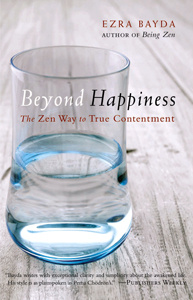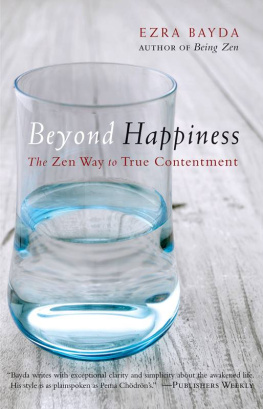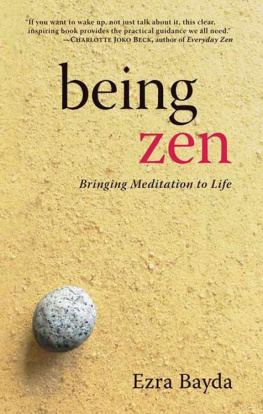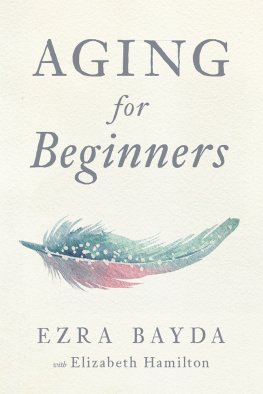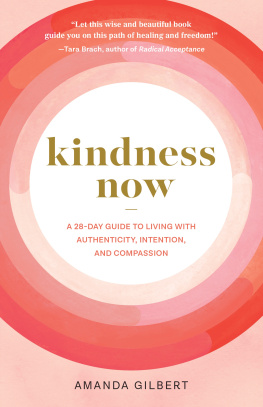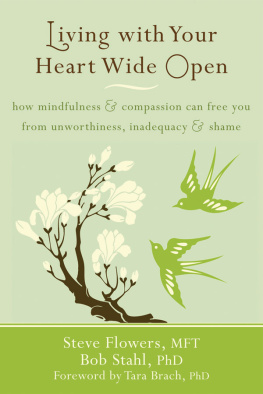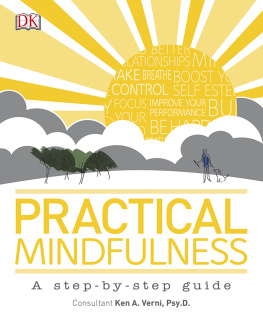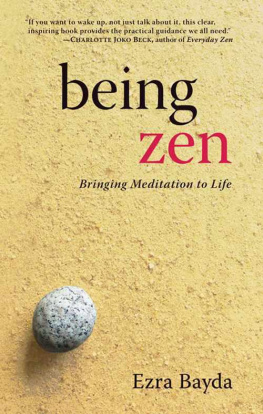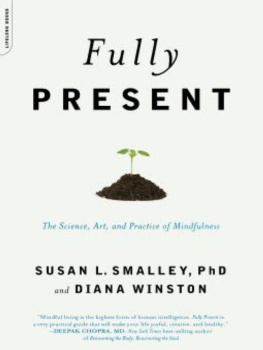Bayda writes with exceptional clarity and simplicity about the awakened life. His style is as plain spoken as Pema Chdrns.
Publishers Weekly
This book is like a personal retreat. Id like to read it once a year. It has the best of the Zen spiritnot indulging but experiencing every ounce of life, good and bad. You will have to read closely, because the lessons are more difficult than they appear. At the same time it is a beautifully simple reflection on what it means to be, rather than to try to be. Im certain of its wisdom because it is not there to be grasped and celebrated. The wisdom is all in the spaces, the pauses, and the wonderment.
Thomas Moore, author of Care of the Soul and A Life at Work
A clear and comprehensive guide to life transformation. Readers will find down-to-earth advice and effective practices for going beyond basic fears and conditioning to live a more awakened and openhearted life.
Dennis Genpo Merzel, Roshi, author of Big Mind, Big Heart: Finding Your Way
ABOUT THE BOOK
Theres a secret to spiritual practice, and its surprisingly simple: learn to be present with attention. Do that, and the whole world becomes your teacher, you wake up to the sacredness of every aspect of existence, and compassion for others arises without even thinking about it. In Zen Heart, Bayda provides a wealth of practical advice for making difficult experiences a valued part of the path and for making mindfulness a daily habit.
EZRA BAYDA teaches at Zen Center San Diego. He is also the author of Being Zen, At Home in the Muddy Water, Saying Yes to Life (Even the Hard Parts), and Zen Heart. For more information, visit www.zencentersandiego.org.
Sign up to learn more about our books and receive special offers from Shambhala Publications.

Or visit us online to sign up at shambhala.com/eshambhala.
Zen Heart
Simple Advice for
Living with Mindfulness
and Compassion
EZRA BAYDA

Shambhala
Boston & London
2012
SHAMBHALA PUBLICATIONS, INC.
Horticultural Hall
300 Massachusetts Avenue
Boston, Massachusetts 02115
www.shambhala.com
2008 Ezra Bayda
Cover photograph: Andrew Geiger/Glasshouse Images
Earlier versions of chapters 5 and 8 originally appeared in the Shambhala Sun magazine.
All rights reserved. No part of this book may be reproduced in any form or by any means, electronic or mechanical, including photocopying, recording, or by any information storage and retrieval system, without permission in writing from the publisher.
The Library of Congress catalogues the hardcover edition of this book as follows:
Bayda, Ezra.
Zen heart: simple advice for living with mindfulness and compassion/Ezra Bayda.
p. cm.
eISBN: 978-0-8348-2581-9
ISBN 978-1-59030-543-0 (hardcover: alk. paper)
ISBN 978-1-59030-722-9 (paperback: alk. paper)
1. Spiritual lifeZen Buddhism. 2. Zen BuddhismDoctrines. I. Title.
BQ 9288.B399 2008
294.3444dc22
2007041862
Our aspiration, our calling, our desire for a genuine life,
is to see the truth of who we really are
that the nature of our Being is connectedness and love,
not the illusion of a separate self to which our suffering clings.
It is from this awareness that Life can flow through us;
the Unconditioned manifesting freely as our conditioned body.
And what is the path?
To learn to reside in whatever Life presents.
To learn to attend to all of those things
that block the flow of a more open life;
and to see them as the very path of awakening
all of the constructs, the identities,
the holding back, the protections,
all of the fears, the self-judgments, the blame
all that separates us from letting Life be.
And what is the path?
To turn away from constantly seeking comfort
and from trying to avoid pain.
To open to the willingness to just be,
in this very moment,
exactly as it is.
No longer so ready to be caught
in the relentlessly spinning mind.
Practice is about awakening to the true Self;
no one special to be, nowhere to go.
Residing in the Heart, just Being.
We are so much more than just this body,
just this personal drama.
As we cling to our fear,
and our shame, and our suffering,
we forsake the gratitude of living from our natural Being.
So where, in this very moment, do we cling to our views?
Softening around the minds incessant judgment,
we can awaken the heart that seeks to be awakened.
And when the veil of separation rises,
Life simply unfolds as it will.
No longer caught in the self-centered dream,
we can give ourselves to others,
like a white bird in the snow.
Time is fleeting.
Dont hold back.
Appreciate this precious Life.
An earlier version of this poem appeared in
Being Zen: Bringing Meditation to Life
The Three Phases of Spiritual Practice
WHEN I FIRST began spiritual practice, my single driving goal was to become free from the discomfort of anxiety and fear. I firmly believed that if I made intense efforts to go against my fears, I could eventually overcome them and be rid of them. I also had the deeply held belief that with one single enlightened experience, my life would be forever clarified.
Since then, and particularly since I became a Zen teacher, I have seen countless students begin practice with similar illusions. Such illusions are based on the hope that one magical experience will change us forevermore, or that somewhere there is a formula capable of unfolding the mysteries of spiritual practice. The problem is there are no shortcuts. Its not that practice is so terribly complex; its more that practice cannot be reduced to a simplistic or instantaneous solution to lifes difficulties.
Nonetheless, we can still talk about what spiritual practice is and what it isnt. Practice is a term that is hard to define. In a general sense, the term is synonymous with spiritual path. For example, saying we have a Buddhist practice means we are following the spiritual path of the Buddhist tradition. But we can also talk about practice in a more concrete way, such as when we refer to specific techniques like meditation practice or prayer practice. Perhaps the most common way the term practice is used is to describe a particular type of effort, one associated with trying to live a more awake and genuine life. When we refer to practicing with daily life, or practicing with emotions, we are using the term in this way, which includes all the ideas and techniques that focus on the effort to practice maintaining awareness.
Over my years of practicing and teaching Zen, I have found that there are three somewhat distinct and essential phases in practice; and the purpose of this book is to clarify how these three phases interweave to allow the wonder of awakening. Whether we are beginners or have been practicing for many years, our ongoing task is to clarify and deepen our learning. Dividing practice into three distinct phases can be very helpful in this learning process, by allowing us to better grapple with the sometimes daunting effort to cultivate inner freedom and equanimity.
Why three phases? And why these particular three? Although the terminology may be unfamiliar, each of these three phases describes a particular inner process that each of us must go through on our spiritual journey; and while there are no distinct or fixed dividing lines between the three phases, the unique inner process associated with each phase needs to be addressed individually. In fact, when any one of these phases is not explored, or even worse, when it is ignored, as often happens when we follow the path of least resistance, our spiritual maturation may be severely hampered. The point is, in order to have a complete spiritual practiceone that includes awakening in each of these unique but interpenetrating phasesit is helpful to have a clear and straightforward explanation of what each of these phases entails.
Next page
